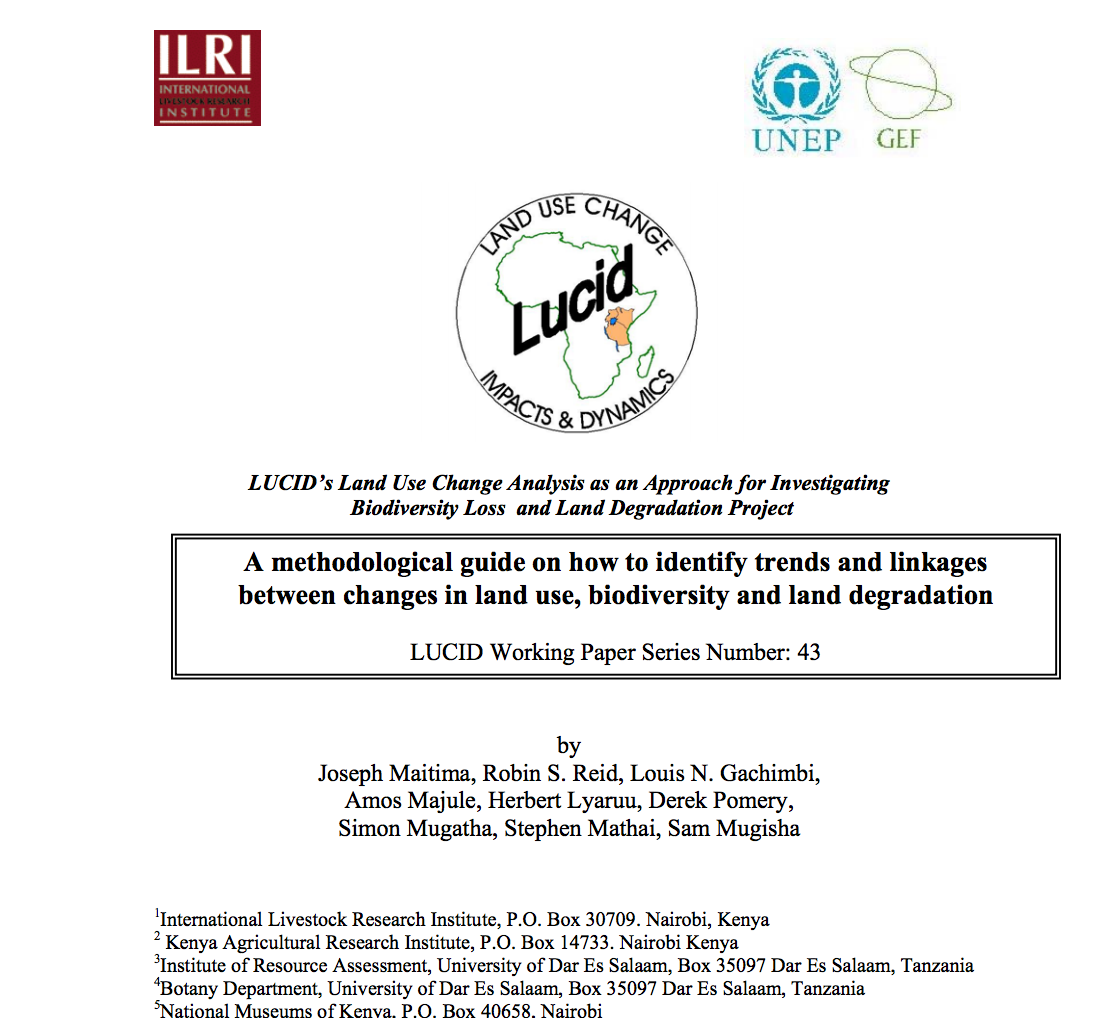Resource information
Land quality in the man-modified agricultural landscapes of eastern Africa has been shown to degrade over time, resulting in higher demands for farm inputs in order to sustain productivity. Loss of biodiversity has also been observed in all these areas of land use change. It has therefore become important to know how land use change contributes to land degradation and how land use change leads to biodiversity loss. This paper from the collaborative LUCID project describes a framework for the analysis between land use change, biodiversity loss and land degradation for the first time. This framework is intended to be replicable and could help guide similar analysis in other areas.The paper introduces conceptual linkages between the three study disciplines, and then poses linkage questions that can guide in choosing the right methodologies in various approaches. Highlights of the framework include:the sampling of components of land use, biodiversity and land degradation indicators on spatial and temporal perspectivessampling across different agro-ecological zonesspace for time analysis, where the analysis of changes across a large spatial scale may allow the capture of diverse land cover types. This serves as a good substitute for lacking sequential historical information at local site leveltransect analysis for linking vegetation and soils across agro-ecological zones and sampling vegetation by quadratsidentification of the linkages: ways of measuring the three components and their relationships whilst minimising the effects of environmental conditions. Identification of the important functional relationships between crop type(s) and soil characteristicssampling of animal biodiversitysampling of soil characteristicsRecommendations from the authors for conducting agricultural linkages assessments are presented. These include selecting areas which represent a range of agro-ecological zones, the standardisation of assessment methods and approaches by researchers working at different sites, as well as the harmonisation of data analysis. This will help generate commonalities as well as variabilities on a regional basis. The document further provides a recommended chronology for carrying out field research.


